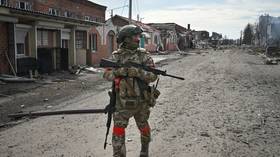Russia's unemployment figures climb
More Russian companies are laying off staff in the face of a withering economic slowdown, with the ranks of the unemployed swelling significantly between last October and December.
There were at least 1.5 million Russians looking for jobs in December – a rise of 20% on October, with unemployment now reaching 7% of the total labor force.
But that’s only those registered and the real figure may be higher according to Russian President, Dmitry Medvedev.
“We now face an unemployment increase of 20% compared with the level last October – one and a half million Russians. – But that’s not all people. We have also seen the growth of so called latent unemployment – those who are on unpaid holidays or who don't work a full week.”
Companies plan more lay-offs in an attempt to reduce costs and weather an economic slowdown which threatens to become a recession. According to official forecasts another 500 thousand people may lose their jobs by the end of the year.
But the majority of Russian companies are likely to cut salaries rather than cut their staff, according to Natalya Orlova, Senior Analyst at Alfa Bank.
“Companies will be reducing their salary payments but unemployment in my view is unlikely to go much, much higher. Unemployment will mainly go higher in the big cities where the labour market is more flexible.”
Europe is expecting unemployment to climb above 9% this year. But its comprehensive social welfare systems are able to protect most workers from poverty until the economy improves. Natalya Orlova says that, for the U.S., 9% is more damaging.
“I think that, in the US, the households are much more leveraged and thus unemployment will have a much more significant impact on consumption as opposed to European countries.”
In Russia financial leverage is relatively weak – retail loans amount to 10% of GDP in comparison to more than 100 in the United States. So a higher jobless rate is likely to reduce hopes of income growth rather than significantly freeze consumption.














